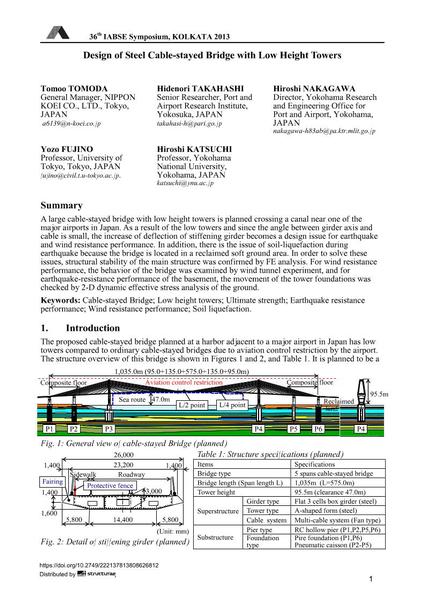Design of Steel Cable-stayed Bridge with Low Height Towers

|
|
|||||||||||
Bibliographic Details
| Author(s): |
Tomoo Tomoda
Hidenori Takahashi Hiroshi Nakagawa Yozo Fujino Hiroshi Katsuchi |
||||
|---|---|---|---|---|---|
| Medium: | conference paper | ||||
| Language(s): | English | ||||
| Conference: | IABSE Symposium: Long Span Bridges and Roofs - Development, Design and Implementation, Kolkata, India, 24-27 September 2013 | ||||
| Published in: | IABSE Symposium Kolkata 2013 | ||||
|
|||||
| Page(s): | 1-6 | ||||
| Total no. of pages: | 6 | ||||
| Year: | 2013 | ||||
| DOI: | 10.2749/222137813808626812 | ||||
| Abstract: |
A large cable-stayed bridge with low height towers is planned crossing a canal near one of the major airports in Japan. As a result of the low towers and since the angle between girder axis and cable is small, the increase of deflection of stiffening girder becomes a design issue for earthquake and wind resistance performance. In addition, there is the issue of soil-liquefaction during earthquake because the bridge is located in a reclaimed soft ground area. In order to solve these issues, structural stability of the main structure was confirmed by FE analysis. For wind resistance performance, the behavior of the bridge was examined by wind tunnel experiment, and for earthquake-resistance performance of the basement, the movement of the tower foundations was checked by 2-D dynamic effective stress analysis of the ground. |
||||
| Keywords: |
cable-stayed bridge ultimate strength soil liquefaction Low height towers Earthquake resistance performance Wind resistance performance
|
||||
